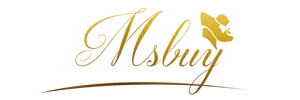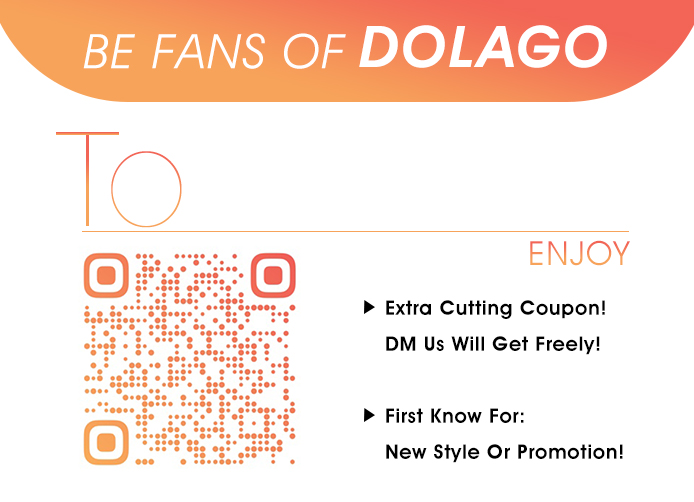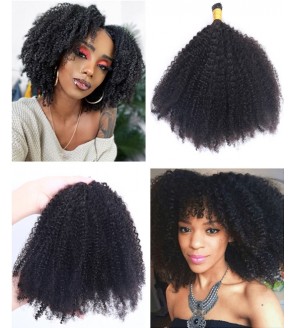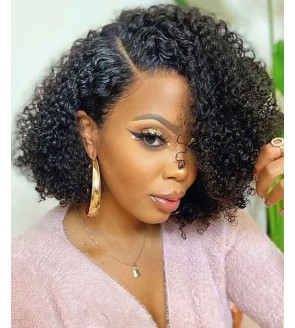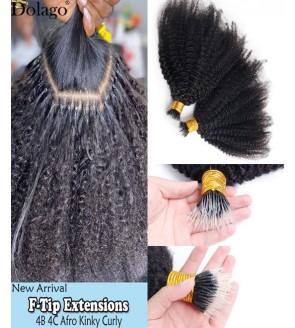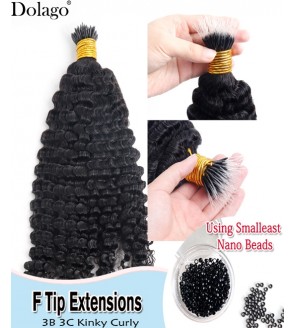Kinky straight hair which is also known as yaki hair is a hair texture that is usually sought after by women with a 4A to 4C hair type. These girls are naturally curly and seek to have natural, flowing straight hair without totally losing their curls. “Yaki straight” is a popular term in the field of hairpieces, and things can get a little confusing, so here’s the language for total beginners. Remy hair and yaki hair are sometimes used interchangeably by people, but when shopping for a hairpiece, they refer to two very different things. Remy hair refers to wigs that come from just one donor or a few people, and are considered the top-of-the-line option as they are 100% human hair. They can be cut, styled, washed, and dyed like your natural hair. Yaki is the texture of a Remy or non-Remy hairpiece. Yaki hair can be achieved by people who don’t wear extensions or use hairpieces. To get the look, your first have to get your hair straightened or relaxed, and then you have to put it through a steamer that will give it tiny kinks. The finished look will emulate the naturally straight curly hair of people from the Afro-Caribbean region.
To achieve the yaki hair texture, you must first straighten or relax your hair. Salons and parlors have developed many techniques to do this using chemicals and oils, but here are a few healthier alternatives that won’t damage your hair as much. Clean your hair with shampoo and condition it deeply with a moisturizing agent. Products with aloe vera and moisturizing oils can help people with fragile hair. Brush it straight as it dries completely. While your hair is still slightly wet, divide it in the middle, and comb it down straight. Brush the left side over to your right and fashion it into a wrap that covers your head’s back. Hold it in place with bobby pins, and repeat the process on the right side before letting it air dry while wrapped in a silk scarf. For this one, you’ll need hair rollers as big as regular cans of soda. After cleaning and conditioning your hair, roll them up tightly while they’re still wet and let them dry thoroughly. Moisture has a way of making your natural curls come back, so make sure your hair is dry before you remove the rollers. The grass is always greener on the other side. People with curly hair want to achieve straight hair, while people born with straight hair want natural curls. They are equally difficult to achieve, no matter where you land on the spectrum. Here are a few ways you can achieve natural curly hair for at least a few days if you have straight hair.
Heat curlers are a tried and tested tool in salons all over the world. Clean your hair and apply a moisturizing conditioner, then run a roller or curling wand through it. Make sure that you follow the instructions on the packaging of your curling wand regarding its different levels of heat, which will have varying effects on your hair. Protect your hair with a heat protection spray to avoid damage and preheat your wand before use. If your hair is already slightly curly, try some curl-enhancing products that will make your locks more pronounced and hold them in place for longer. Some curly hair types respond more to heavier and creamier products, while some respond better to lighter mousses. Know your hair type and the products that work for you. Humidity is one of the biggest reasons why your curls might start returning after you’ve diligently straightened your hair. Thankfully, there are many modern tools like weather apps and hygrometers that measure the humidity in the air, so you know which days to stay inside in the air conditioning. On days with high humidity, tie your hair into a bun to protect it. Use an anti-frizz leave-in conditioner or coconut oil to prevent your hair from plumping up. Use methods other than heat to straighten your hair, as repeated exposure to heat might damage your hair.
Aside from the methods already outlined above, you can also buy some overnight hair bands and use them for a more permanent solution. Dampen your hair, and then tie it up with one or two ponytails. Add some more elastic ties to your hair, one for every inch, until you’ve covered its entire length. Make sure they’re not too tight, or they will leave some marks. Leave it overnight and enjoy straight hair the next day. Blending naturally curly hair with a straight weave extension might sound simple, but there are a few differences in the process depending on your hair type. The biggest challenge is matching the texture of your hair to your hair extension. Handling it with an iron will leave your hair looking drier and less shiny than your hair extension. If you have 3A to 3C hair, use a thick hair repair mask and a steamer. The heat and vapor from the steamer will allow the mask to penetrate your hair deeply while imparting as much moisture and shine as possible to help your hair match the extension. If you have 4C hair, choose Indian hair extensions with a matching Indian closure. Reduce the closure’s density by coloring the lace using coffee grounds, and leave out a small amount of your hair so the extension can blend in seamlessly.
To get naturally straight hair without using chemicals, you need to pick the right straightening tool for you. One instrument can have different effects on different people. Here are some all-natural suggestions to get you started. You don’t need to spend upwards of $100 to get a good straightening mask. You can make your own at home. Mix one tablespoon of honey into one cup of coconut milk or full cream milk, and dip your scalp and hair for an hour before taking a bath. Do this twice a week for a couple of months until you see your hair visibly relax.
